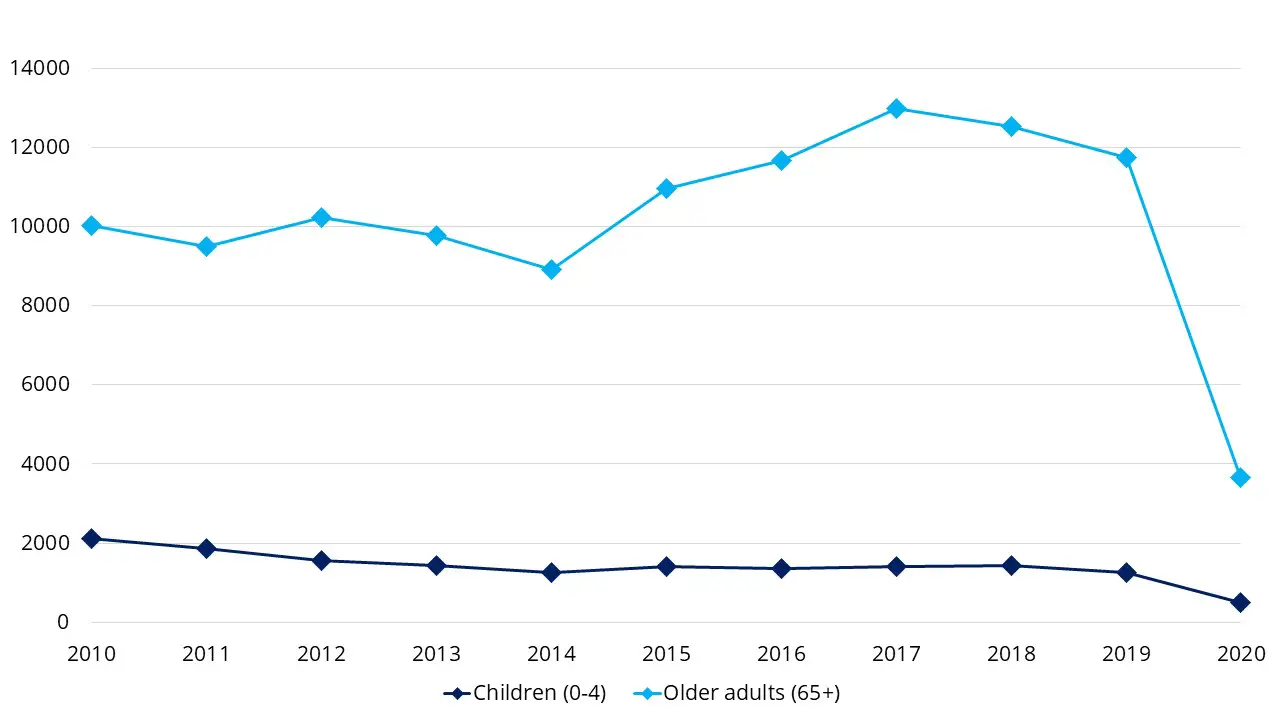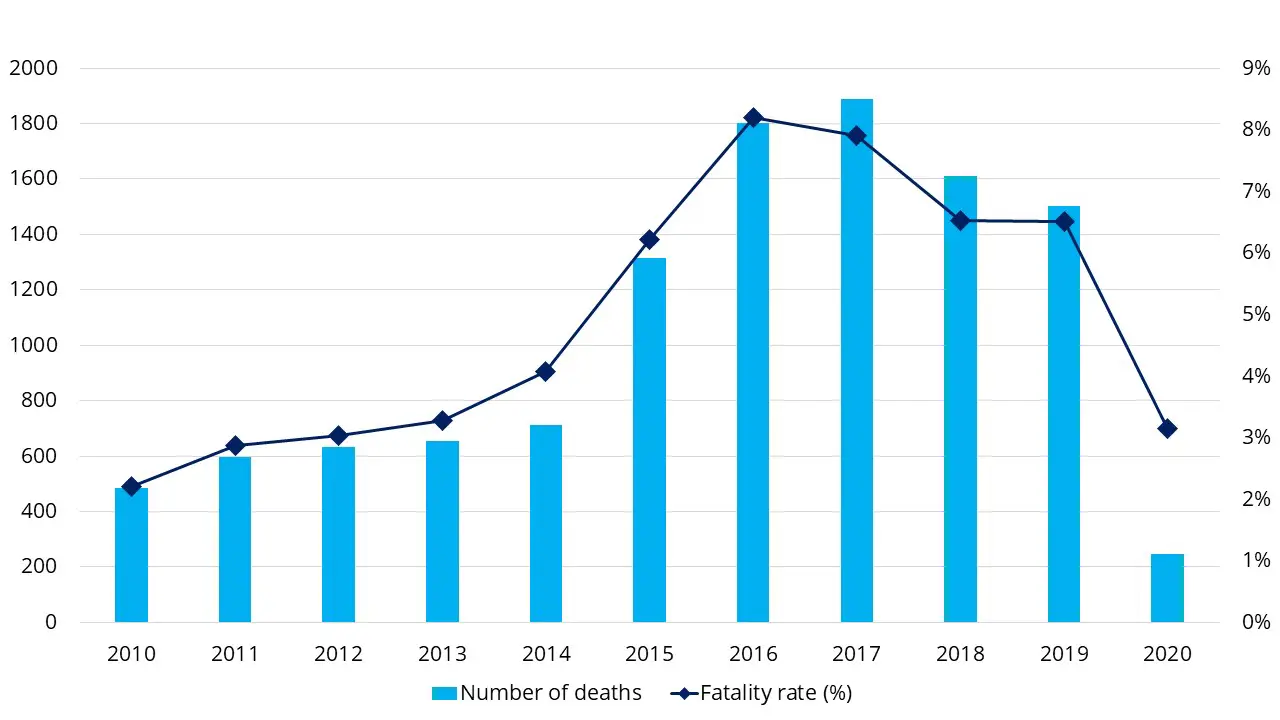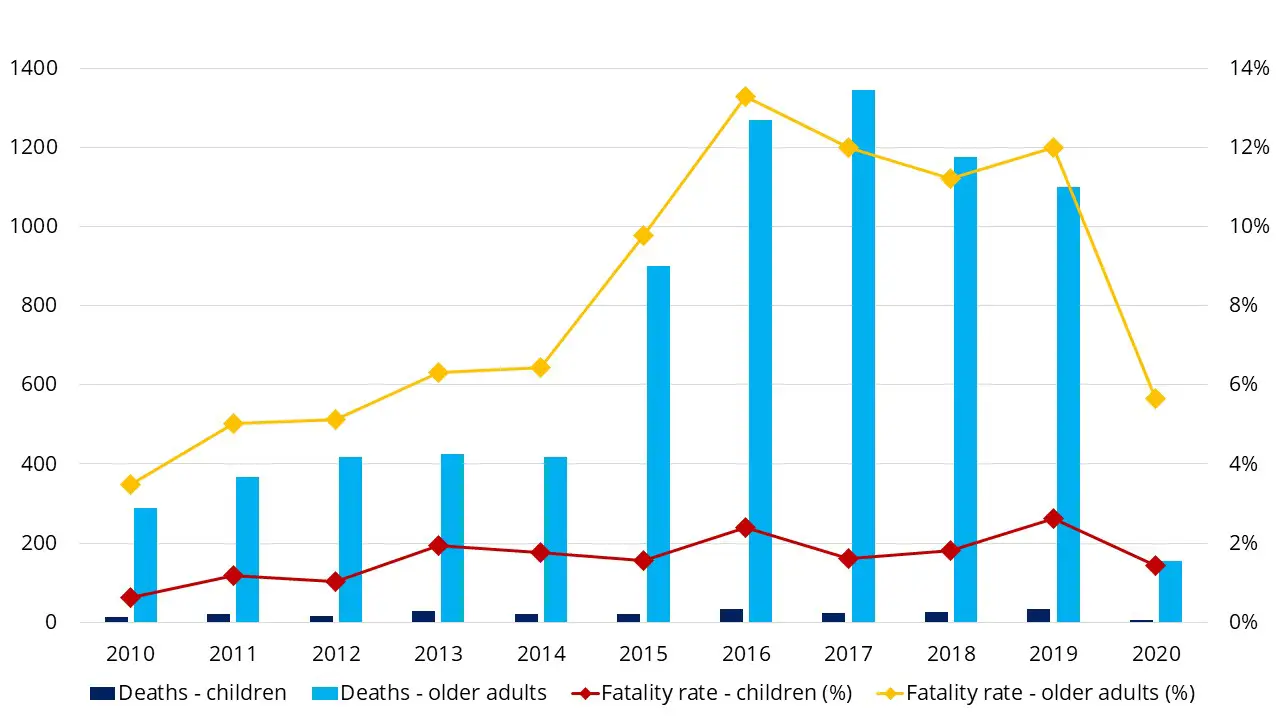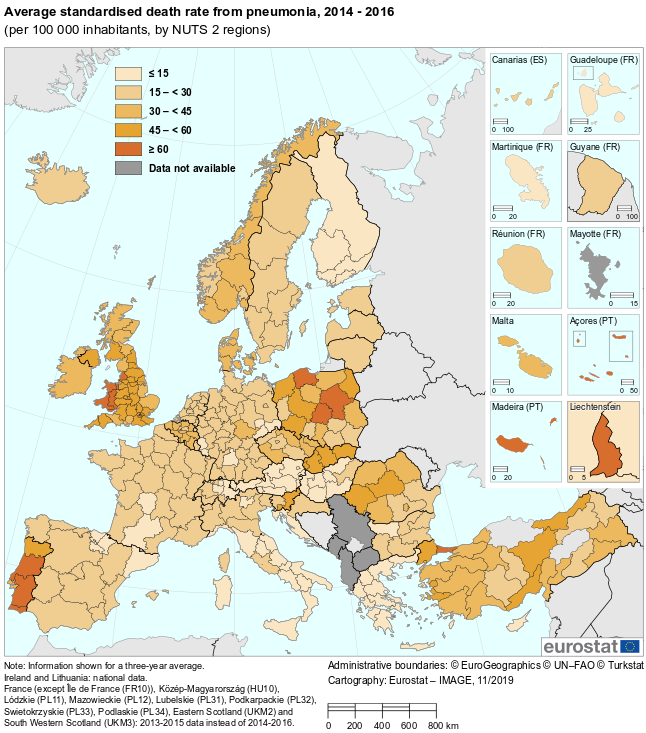What is pneumococcal disease?
Pneumococcal disease is the name for any infection caused by Streptococcus pneumoniae (S. pneumoniae) bacteria. Invasive pneumococcal disease (IPD) refers to more severe infections such as pneumonia and bloodstream infections. Non-invasive pneumococcal infections include conditions such as ear infections.
S. pneumoniae is the most common cause of community acquired bacterial pneumonia. Pneumococcal pneumonia is frequently preceded by a viral respiratory tract infection and typically presents abruptly with chills and high fever, followed by a cough and chest pains.
Pneumococcal infections and IPDs are major causes of severe disease and mortality in Europe and globally. A large proportion is preventable through vaccination, and recommendations are made for children, older adults and those with specific underlying health conditions.
Key IPD figures* in Europe, 2010-2020
Average number of cases per year: 20,353
Average number of deaths per year: 1,041
*Cases and deaths among children aged 0-4 years and adults aged 65 and above.
DATA FOR invasive pneumococcal disease 2010-2020*
*2020 data may be lower due to the COVID-19 pandemic and subsequent national lockdowns and social distancing measures.
Deaths from pneumonia in EU regions, 2014-2016
Average standardised death rate from pneumonia, 2014-2016
(per 100,000 inhabitants, by NUTS 2 regions)
Source: Eurostat
Report an issue: Something doesn’t look right? Contact us





